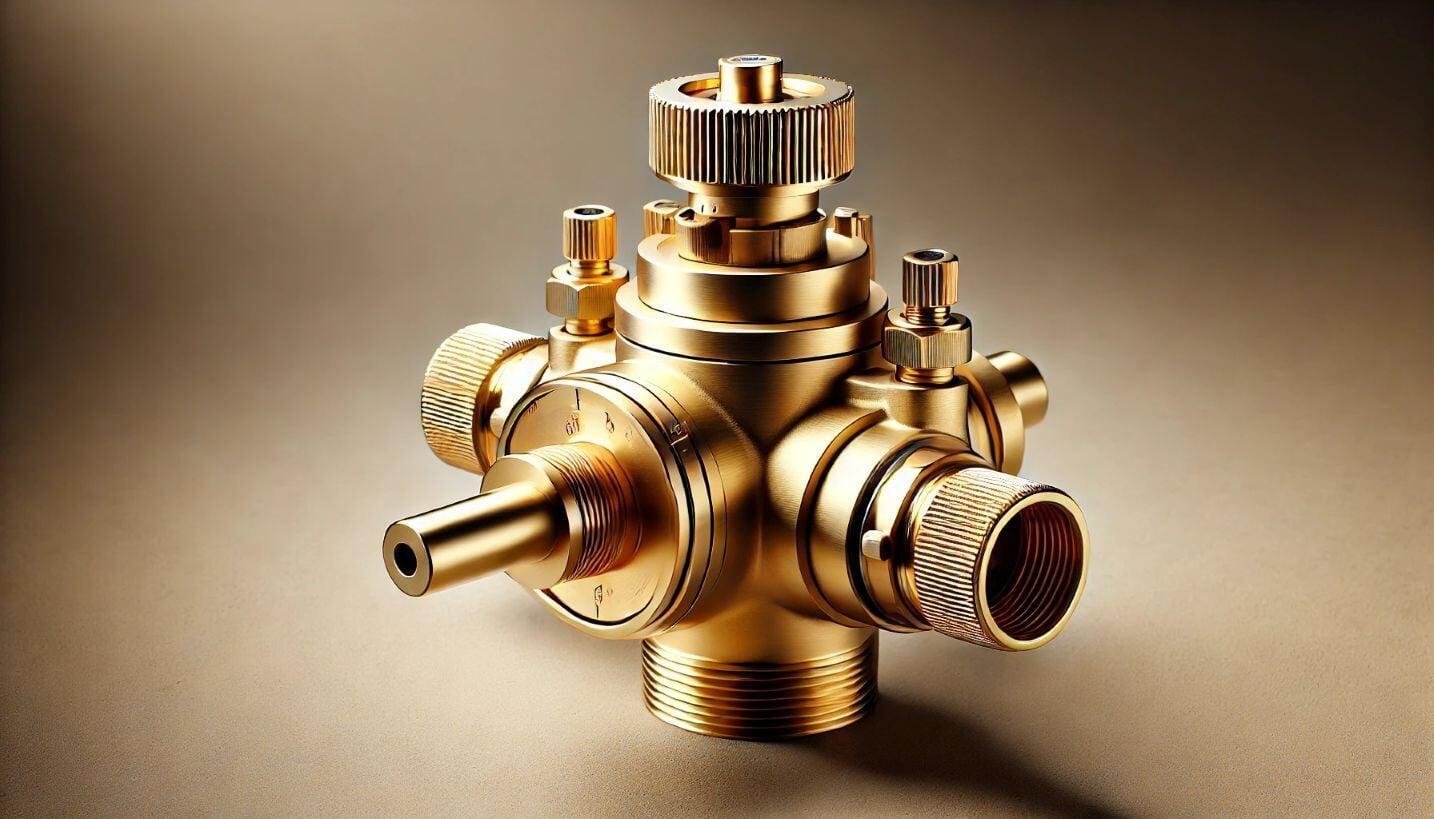
A well-functioning shower is more than just a stylish showerhead or a beautifully tiled space—it’s about controlling water temperature, flow, and pressure effectively. At the heart of this system lies the shower valve, an essential component that ensures a comfortable and safe showering experience.
What is a Shower Valve?
What is a Shower Valve?
A shower valve is the device inside your bathroom wall that controls the flow and temperature of your water. It connects to both the hot and cold water lines, ensuring they mix properly before reaching your showerhead or faucet.
Without a properly functioning shower valve, you could experience sudden fluctuations in temperature whenever someone in your home uses another water source. Certain types of valves also help in directing water flow between multiple shower components, such as rain showerheads, handheld sprayers, and body jets.
Do You Even Need a Shower Valve?
Do You Even Need a Shower Valve?
Yes! A shower valve is a non-negotiable part of your plumbing system. Every modern shower needs a valve to:
✅ Regulate water pressure and prevent sudden spikes or drops
✅ Direct water flow between different outlets (showerhead, tub spout, sprayers)
✅ Enhance comfort by maintaining a stable water temperature
Without one, your shower would be unpredictable, uncomfortable, and possibly unsafe.
Types of Shower Valves
Types of Shower Valves
1. Mixing Valves
1. Mixing Valves
Mixing valves are the most basic type of shower valve. They manually blend hot and cold water to reach the desired temperature but do not regulate sudden temperature fluctuations caused by changes in household water usage.
💡 Best for: Older homes or budget-conscious renovations where temperature fluctuations are not a major concern.
2. Pressure-Balancing Valves
2. Pressure-Balancing Valves
Pressure-balancing valves are designed to keep water temperature stable even when someone else in the house uses water. They automatically adjust to changes in pressure from the hot or cold water supply, preventing sudden bursts of cold or hot water.
💡 Best for: Ideal for 1-2 Showerheads or Faucets
3. Thermostatic Valves
3. Thermostatic Valves
Thermostatic valves take water temperature control to the next level. Instead of just balancing pressure, they maintain a set temperature regardless of fluctuations in water supply. Users can pre-set their preferred temperature, making them a great choice for high-end showers.
💡 Best for: Luxury showers with multiple showerheads and body sprays.
4. Diverter Valves
4. Diverter Valves
A diverter valve is a type of valve that directs water from one fixture to another. It’s commonly used in tub-shower combinations, allowing you to switch between the tub faucet and the showerhead with the turn of a knob or pull of a lever.
💡 Best for: Bathrooms with a bathtub and shower combination.
5. Transfer Valves
5. Transfer Valves
Similar to a diverter valve, a transfer valve allows users to switch between multiple water outlets. However, unlike diverter valves, they allow multiple fixtures to operate simultaneously. If you want to use a rain showerhead, handheld sprayer, and body jets at the same time, a transfer valve is the way to go.
💡 Best for: Custom showers with multiple showerheads and body sprays.
6. Manual Valves
6. Manual Valves
Manual shower valves require users to adjust the temperature and flow manually. They are simple, cost-effective, and work well in setups where precise temperature control isn’t a priority.
💡 Best for: Traditional bathrooms or homeowners looking for affordable options.
7. Volume Control Valves
7. Volume Control Valves
Volume control valves allow you to adjust the water flow rate separately from the temperature. This is a great way to conserve water while keeping a consistent temperature.
💡 Best for: Households looking to reduce water consumption without sacrificing comfort.
8. Digital Shower Valves
8. Digital Shower Valves
Digital shower valves bring modern technology into the bathroom. Controlled via a touchscreen panel or smartphone app, these valves allow you to precisely control water temperature, pressure, and even preset shower settings. Some models even offer voice control compatibility with smart home systems.
💡 Best for: Smart home setups and high-tech bathroom designs.
Shower Valve Connection Types
Shower Valve Connection Types
1. Copper Connection
1. Copper Connection
- Durability and Resistance: Copper connections are known for their strength, resisting corrosion and handling high temperatures effectively.
- Secure and Watertight: Involves soldering copper pipes to the shower valve, ensuring a leak-free connection.
- Antibacterial Properties: Copper's natural antibacterial qualities make it a hygienic choice.
- High Water Pressure: Ideal for maintaining consistent water flow and temperature control.
- Reliability: Despite newer materials, copper remains a trusted choice for various plumbing needs, offering a balance of reliability and performance that has stood the test of time.
2. Iron Pipe Straight (IPS)
2. Iron Pipe Straight (IPS)
- Ease of Installation: IPS connections use threaded fittings, making them easier to install and adjust compared to soldered connections.
- High-Pressure Suitability: Commonly used in high-pressure plumbing systems, ensuring reliable performance even under demanding conditions.
- Versatility: Compatible with a wide range of plumbing materials and systems, providing flexibility in various installation scenarios.
- Durability: Known for their robustness, IPS connections offer long-lasting service with minimal maintenance.
- Leak Resistance: When properly installed, IPS fittings provide a secure and watertight seal, reducing the risk of leaks.
3. PEX
3. PEX
Flexibility and Ease of Installation: PEX is known for its flexibility, allowing for easy installation, especially in tight spaces.
Popularity in Modern Plumbing: Widely used in contemporary home plumbing systems due to its adaptability and efficiency.
Cost-Effective: Generally more affordable than traditional copper piping, making it a budget-friendly option.
Resistance to Scale and Chlorine: PEX is resistant to scale buildup and chlorine, enhancing its durability and lifespan.
Quiet Operation: Reduces water hammer noise, providing a quieter plumbing system.
Choosing the Right Shower Valve for Your Remodel
Choosing the Right Shower Valve for Your Remodel
When selecting a shower valve, keep these factors in mind:
How many shower outlets do you have? A basic valve is fine for a single showerhead, while transfer valves are better for multiple water sources.
Do you experience sudden temperature changes? If so, choose a pressure-balancing or thermostatic valve.
Do you want modern features? If so, a digital valve may be the best choice.
Concealed vs. Exposed Shower Valves
Concealed Valves – Hidden behind the wall for a sleek, modern look.
Exposed Valves – Easier to install and maintain but more visible.
The right shower valve is a key component in any bathroom, ensuring consistent temperature, water pressure, and functionality. Whether you need a basic manual valve, a pressure-balancing option, or a high-tech digital valve, choosing the right one will improve both comfort and efficiency.
By understanding the different types of shower valves, their functions, and their benefits, you can select the best option for your remodel and enjoy a reliable, luxurious shower experience every day.

